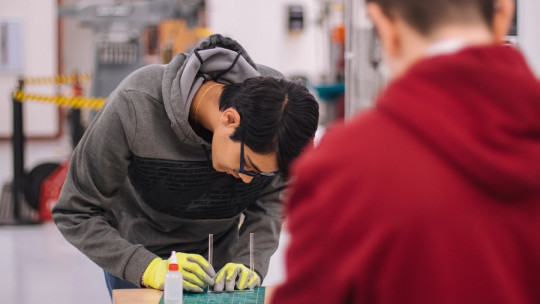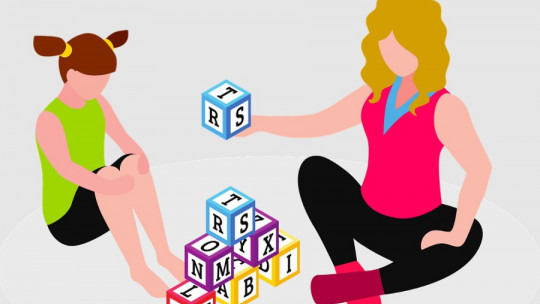There are many group work methods to expand knowledge on a specific topic.
Communities of practice represent one of the most powerful Through the following points we can get a general idea of how these systems work and what their strengths are compared to other different methodologies.
What are communities of practice?
Communities of practice are groups of people who associate with the common objective of expanding knowledge and practices about a certain topic In this community, each person’s practical experiences are shared and reflected on. In this way, everyone benefits from mutual work and also experiences a strengthening of relationships between the members of said group.
Researchers Étienne Wenger and Jean Lave were the first to mention this methodology, in 1991 Since then the popularity of communities of practice has increased, with reference to them being made in more and more articles. Other authors, such as John Seely Brown and Paul Duguid, tell how one of the first communities of practice emerged naturally, at Xerox’s Palo Alto Research Center.
In this case, they discovered that the operators in charge of repairing the printers often did not use the technical manuals that had been provided to them, but rather preferred to take advantage of the breaks and pauses to discuss with their colleagues the different incidents that had been reported. had faced and what was the way in which they had managed to find the solution. Others explained the problems they were managing and asked for advice.
Without realizing it, this group of workers had inaugurated a very powerful and effective methodology, that of communities of practice. Thanks to this, each technician could share his experience with the rest of his colleagues and in turn benefit from the practical cases that each of the others had experienced and that he was now sharing with the group in question.
Some researchers suggest that communities of practice could be an evolution of the classic brainstorming method, seen from a practical rather than theoretical prism.
Characteristics of communities of practice
Communities of practice must have a series of characteristics that we will describe below.
1. Shared leadership
Community It is made up of a homogeneous group of participants That is, everyone is in the same position. There is no leader who shares his knowledge while others listen, but rather all members teach with their experience and at the same time learn from the experience of others, so they would be on equal terms.
Yes, there may be a figure of coordinator, in charge of connecting the different members and organizing meetings or events, suggesting debate on different problems and promoting the active participation of all members of the group, so that everyone makes contributions equally and benefit from those of the rest.
2. Field of knowledge
The common link between all members of the community of practice must be a specific field of knowledge. This element will be the one It will provide the feeling of group, being the element that all members of this society share Each member wants to become an expert in the field and at the same time collaborates so that everyone else becomes one as well.
3. Practice
The activity itself or practice about this shared knowledge will be the driving force of the community, since it is the activity that generates the experiences that can then be shared to give meaning to the group and allow all members to learn from the activity of others in the same way. than if they had carried it out themselves.
4. Feeling of community
When communities of practice are put into operation, a feeling of identity is generated, facilitated by all the previous elements, by which All members want to help others, sharing everything that may be useful and also making use of the information that the rest contribute It would be a kind of hive in which everyone is a bee pursuing a common goal, which would be the success of both their own and their companions.
There could be the case of people who approach the community solely with the objective of collecting information and experience from the members, but not with the aim of sharing their own practice with the rest. In this case, said person would not be an active member of the community, since they would not be meeting the reciprocity criterion. Instead he would be a peripheral member, assuming he makes some contribution at some point, or he could even be an external participant.
Virtual communities of practice
The appearance of new technologies and specifically the Internet and social networks has led to the evolution of communities of practice in their virtual form, and that is Nowadays it is not necessary to meet in person with a group of people to be able to share knowledge, far from it. We don’t even have to be geographically close.
On the contrary, digital media make it possible for people from different parts of the world to connect through an online platform with people interested in the same field of knowledge and thus be able to share experiences and learn from others.
As is generally the case on these platforms (forums, Facebook, WhatsApp groups, etc.), each person’s contributions are recorded in writing, It is not even necessary for all members to be online at the same time or belong to the same time zone. A person can ask a question as soon as it arises and will receive answers as members access the publication and write their response.
Also having a written record of all publications makes it easy to find the author of a given contribution and also being able to offer information in an organized way when new members arrive to the different communities of practice.
Obviously not all people have the same knowledge or the same practice, so there will be people who can participate more actively and share more complete or useful information. They will be the reference members of the group, but little by little homogenization will take place, as the others also learn and can contribute a greater amount of experiences that enrich even the most active members.
Although we had anticipated that communities of practice do not have a leader who provides data while the rest of the members receive it passively, they do. There may be a moderator or animator, especially in these virtual communities This figure would be in charge of promoting this two-way participation among all members.
How to create a group of this type?
We already know what the characteristics of these groups are and what makes them so useful. The next thing we might ask is how a community of practice is created. To do this, Wenger proposes a system of seven principles that must be followed in order to build one. They would be the ones we are going to see.
1. Ease of evolution
The community of practice must behave like a living organism To do this, we must lay the foundations that allow it to grow and evolve according to the interests and needs of the group members.
2. Permeability
It is important that the opinions of the members are taken into account and therefore penetrate the community But sometimes it is just as important to also take into account ideas that come from outside our community of practice, as they can be enriching and generate growth.
3. Levels of participation
We must encourage participation, having a group of very active members that will spur the rest, the peripheral ones, so that they contribute more and more knowledge to the group. There will also be people outside the community who, although they do not participate, can also benefit from the knowledge provided. Ideally, these people will also make their contribution, but in many cases this will not happen.
4. Public and private spaces
Communities of practice work just like many other social interactions. Sometimes they will take place publicly where all members can participate while other times, two or more participants will prefer to have a private conversation where they can resolve particular doubts without the rest being aware of it. It is necessary that there be a balance between both situations so that the health of the community is guaranteed
5. Provide value
What makes a community of practice valuable is the interest that members have in that particular topic. If the community provides valuable data for those people we will be facilitating the continuity of the group.
6. Closeness and emotion
What differentiates the community of practice from a work group is that There is no pressure to meet objectives and we also have a motivation towards the subject, which makes it easier to generate a climate of closeness and pleasant emotions among the members of the association.
7. Take care of the rhythm
Finally, It will be important to measure the pace at which the community advances Like everything in life, the virtue is in the middle ground, because if the community of practice barely advances and no one contributes interesting information, people will most likely lose interest, while if we bombard with an incessant cascade of data and experiences, we can also overwhelm members and risk them leaving.









